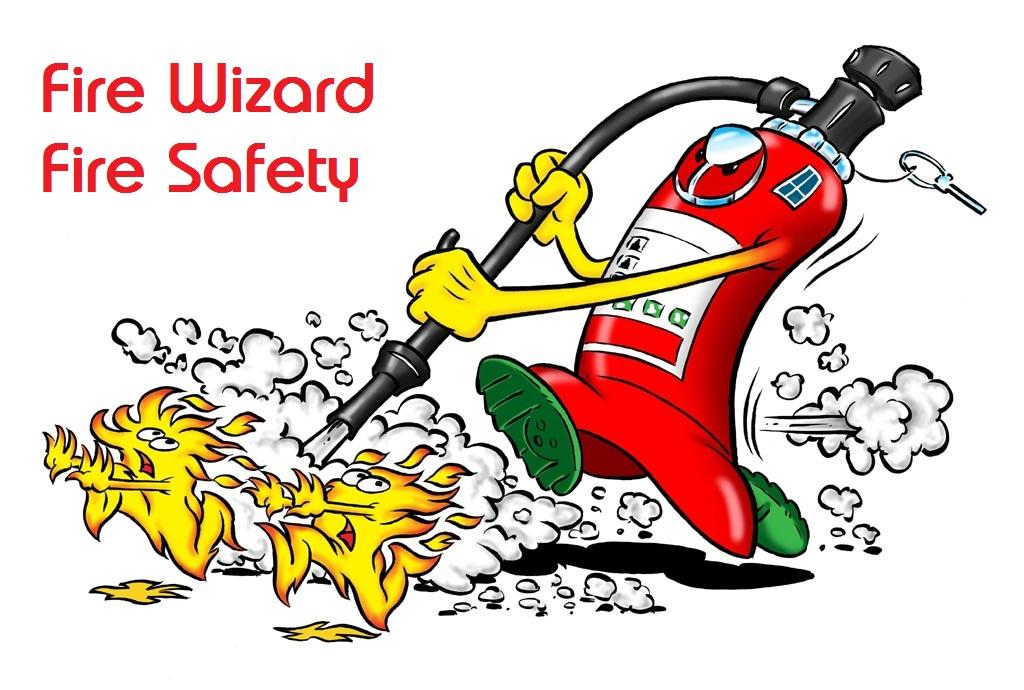-
Posts
2,697 -
Joined
-
Last visited
Everything posted by AnthonyB
-
There's no automatic requirement to separate kitchens in this way and open plan is used in many cases - it's still of use for property protection and in some situations could be necessary for life safety - if you feel the layout of the premises is such the fire separation is important for the safety of relevant persons then it's appropriate to recommend it.
-
A client can close an action with notes/photos on the live system for their property, but the original FRA by our consultants remains unchanged and isn't superseded until we have returned to site for a full review. This is because often actions closed by clients have to be put back on because: - The action has not been remedied correctly; or - The action is still to be physically completed and the client has actually only obtained quotes for the work; or - The action has been closed with no remedial work or mitigation at all as the client just wanted the action to go away without doing anything .... and more
-
Not necessarily the above - remember I've quoted current standards. L1 & L2 are usually for where sleeping risk is present or the system is used as part of an engineered solution for departures from other aspects of fire safety guidance. Your FRA, based on the actual layout and usage, should advise. Some detection would no doubt be of benefit, but you don't automatically have to blow your fit out budget on a top level system. Most fires in occupied non sleeping buildings are detected by human senses before a smoke detector (& long before a heat detector) would activate, hence M being the minimum category.
-
Ownership does not have a bearing directly on responsibility, the hierarchy is as follows: -Are you an employer? If so you are the responsible person for your workplace (whether you own it or not) to the extent that you have control - Are you a person having control of a premises for the purposes of an undertaking even if no one is employed? If yes, then like the above you are a responsible person. You are an employer and your lease will give you a wide degree of control of the premises whilst in occupancy (you will have a variety of repair and maintenance obligations under it) so you hit the main two triggers of liability. Landlords can be responsible persons - they were included in the legislation to cover vacant buildings and areas, but also for any aspect of premises that they retain control over that is not controlled by an employer or other person. Unless the fire alarm is a system in common other than to your office (& you don't have your own fire alarm panel) then the whole list is your responsibility - although I would have expected that your office wasn't let to you unless it had a valid EICR and gas certificate (but if you've been in the office for some time they may have fallen due again whilst still under your control, 5 years typically for EICR, annual for gas)
-
What is the fire classification of the sheeting you propose? I would suspect it's not in Class A or B hence their objection. You need them to commit to a fire performance classification as a minimum standard and then see if you can find a suitable material that meets it.
-

Do offices require a fire resistant glass panel?
AnthonyB replied to a topic in Fire Doors and Accessories
Fire doors don't all require vision panels, that's wrong - the regulations state Vision panels are needed where doors on escape routes sub-divide corridors, or where any doors are hung to swing both ways. Note also the provision in Approved Document M Access to and Use of buildings, concerning vision panels in doors across accessible corridors. -

Do offices require a fire resistant glass panel?
AnthonyB replied to a topic in Fire Doors and Accessories
Put simply, no. -
A number of factors determine if you need a second exit (internal or external) including travel distances, whether the existing stair is a protected route (enclosed in fire resisting construction and fire doors with a final exit at the foot or via a protected corridor) and numbers needing to exit the storey. Numbers wise you are OK as below 60, but the other factors still need to be accounted for.
-
If it's in a location requiring them, i.e. protecting means of escape, as oppose to enclosing areas of special fire hazard, etc then you would expect to see them. But just as not every wooden fire door requires smoke seals neither does very steel one - as said it's up to the FRA
-
Which is fine for building regulations purposes, yet the second it's handed over the official risk assessment guidance contradicts it and expects signage. This shows how disjointed things are! It's hardly going to critically affect life safety in any case...
-
From the British Standard for fire alarm systems: Premises type: Common places of work, such as offices, shops, factories, warehouses and restaurants System category M or P2/M A or P1/M Notes Category M system normally satisfies the requirements of legislation. It is, however, often combined with a Category P system to satisfy the requirements of insurers, as company policy for protection of assets, or to protect against business interruption Translation! A Category M fire alarm system to BS5839-1 consists of 'break glass' manual call points and alarm sounders connected to a control & indicating panel. P2/M indicates selected areas are provided with smoke or heat detection, P1/M indicates all areas are so provided - in both cases the detection for property protection and not part of a legal requirement for life safety (although it does have benefit towards it). Systems with life safety detection are category L (1-5) and whilst not required in all cases depending on your layout may be needed rather than just category M. Your Fire Risk Assessment should determine this.
-
Unlikely, they'd potentially have to destructively test it. The only other option is certified treatment https://www.flameprotectuk.com/?gclid=CjwKCAjw-8qVBhANEiwAfjXLrp2JunzO-vJ6PBncr5P5Bhi-rAt8S2LBm8HLx1tCgQq3qNXDNAspARoCh2oQAvD_BwE
- 49 replies
-
- leather
- fire proofing
-
(and 1 more)
Tagged with:
-
Are the viewing panels fire resistant glazing suitably fixed and beaded? If not then the rest doesn't matter, it's not a fire door (don't forget to consider any transom above the door too) The gaps, warping, lack of fully closing etc all mean that these will not perform in the slightest as fire doors. Whilst guidance allows older style fire doors in certain circumstances they still have to be in good working condition and to the standard of the time - which these are not!
-

Extinguishers servicing for a new job
AnthonyB replied to Brettkelly's topic in Fire Extinguisher Servicing
You are a competent person with the training and equipment to do the job - BAFE has nothing to do with it. I'm not BAFE but can legally service and issue certificates. -
Sheet based fire barriers & wire reinforced mineral wool barriers are sometimes easier to fit than blockwork or stud and plasterboard. Yes an open cavity is a significant risk and has been involved in fatality and high loss fires.
-
Sounds a bit made up (it's not in the guidance at all). Correct use and suitable inspection for signs of damage and wear are all that is detailed.
-
1) Guidance states that "It is strongly recommended that the exit door from each unit of accommodation (bedsit or flat) is also openable from the inside without the use of a removable key." so you don't have to. If you ever replace the door and furniture the general expectation would be the new door would comply 2) Not unless it was due to proven equipment failure, which is very uncommon. False alarms are usually caused by the occupants. 3) Possibly, it sounds like the premises may have changed evacuation strategy (possibly due to poor cladding or firestopping) and the communal alarm system has had to be extended into the flats to facilitate full evacuation - if they didn't do this they could face Prohibition action from the fire service in which case you wouldn't have any tenants or rent as the building would be vacated. It might not be this at all, but it is common.
-
Not a fire safety issue but a property law one. There may be a clause in the freehold or leases giving a right of access making the blocking of the gate unlawful from a civil law point of view. If no such right of access exists then you are stuck, although some plaintiffs have won where the ability to access, albeit informal, has been in place for a substantial period of time. This is one for a specialist in property law to advise on really.
-
No set rules, it's down to the HA to determine their policy. Tenants being able to reset alarms without being able to confirm isn't real is a potential issue.
-
No - whilst front doors of flats don't have to have these signs the Sleeping Accommodation guidance gives no differentiation regarding FDKS signs. Most fire certificates under previous legislation were similarly robust. However in premises that have no other particularly serious issues the door signage alone is likely to be under threshold for enforcement, the premises being deemed 'broadly compliant' Larger hotel chains are likely to have Primary Authority arrangements with a single fire service acting as umbrella enforcer and adviser and if it's agreed with them that it's not necessary then this would apply across the estate even in other fire service areas.
-
Its emergency lighting not fire lighting, there may be other power failure causes where someone needs to safely navigate the stairs, also even in stay put premises there is often a need to evacuate other than the fire flat. That's why both regulations and guidance require it's provision as well as it being subject to a system of maintenance and being fit for purpose.
-
I doubt it unless someone's external escape route has no option to pass close to the door.
-
Unless it's unassisted independent evacuation with simultaneous evacuation this is wrong & dangerous. I think specialist fire safety input is required urgently to prevent an expensive error!
-

Internal fire rated window recommendations?
AnthonyB replied to a topic in Other Fire Safety Products
This company can help https://www.checkmatefire.com/news/specifying-fire-resistant-glass -
You are best asking the manufacturer who will provide maximum tolerances for their doorset to retain performance.

